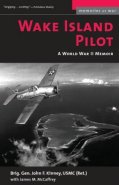Wake Island
Wake Island is a V-shaped coral atoll in the North Pacific Ocean, located about 2,300 miles from Honolulu to the west and 1,500 miles from Guam to the east.
Wake Island is not one island, but is in fact three separate islets (Wake, Wilkes and Peale) which surround a central lagoon. Towards the narrow end of the lagoon, the water becomes extremely shallow until it ends in a large expanse of white sand which dries at low tide. Wake Islet is the largest and most important of the three islands and features a 3,000m runway.
Wake island is an American territory having been annexed at the end of the nineteenth century.
The island's airstrip is now used by the US military, for stopovers and refuelling as well as for emergency landings for transpacific flights. Currently, access to the atoll is restricted to official government business.
Weather
The climate is tropical with little variance in the hot humid weather all year round. Cooling trade winds help moderate these temperatures however, making the overall weather warm and pleasant.
Typhoons are possible especially between the months of August and November
How to get there
Access to the island is restricted and all current activities on the island are managed by the United States Air Force, the United States Army, and Chugach McKinley, Inc., a civilian base operations and maintenance services company. There are no indigenous inhabitants on Wake Island.
Where to stay
No hotels. Accommodation only for military personnel and related contractors.
World War II
An air and naval base was developed on Wake Island in 1940 due to the importance of its strategic position. Japanese bombers attacked on the 7th of December, 1941, destroying most of the fighter aircraft on the island.
The small garrison of around 450 American soldiers was boosted by the 1150 contractors who were also on the island. Together, using old and insufficient weapons, they managed to repel many Japanese attempts to take the island until they were finally overwhelmed on the 23rd of December, 1941.
Not only did the Japanese sustain more loss of life (up to 900 Japanese compared to only 120 Americans - both military personnel and civilians), but also lost four destroyers and 20 aircraft in the fighting.
On the 5th of October 1943, after a devastating air raid by American forces, the Japanese commander Admiral Sakaibara realised an invasion was imminent and ordered the execution of the 98 American prisoners of war. After the war, Sakaibaira was tried for war crimes, found guilty and executed.
A Paramount film about Wake Island (1942) was made before the real life battle for Wake Island was over.
|
New Zealand

New Zealand
Polynesia

American Samoa
Cook Islands
Easter Island
French Polynesia
Hawaii
Niue
Samoa
Tokelau
Tonga
Tuvalu
Wallis and Futuna
Micronesia

The Federated States of Micronesia
Marshall Islands
Palau
Northern Mariana Islands
Nauru
Kiribati
Guam
Wake Island
Melanesia

Bismarck Archipelago
Fiji
New Caledonia
New Guinea
Maluku Islands
Solomon Islands
Torres Strait Islands
Vanuatu
Further Reading

Wake Island Pilot
John F. Kinney, James M. McCaffrey
Price: £5.40 (20% off list price)
Within hours of the attack on Pearl Harbour, the Japanese struck the small U.S. garrison on Wake Island. As his squadron's engineering officer, Marine pilot John F. Kinney had to oversee the repair of damaged planes when he was not in the air fighting the Japanese. His gallant efforts helped the defenders hold out for an incredible two weeks. Kinney's remarkable story includes his escape from a Japanese POW camp in China and his service during the Korean War.
Buy the Wake Island Pilot with 20% discount securely online via amazon.co.uk by clicking here
|